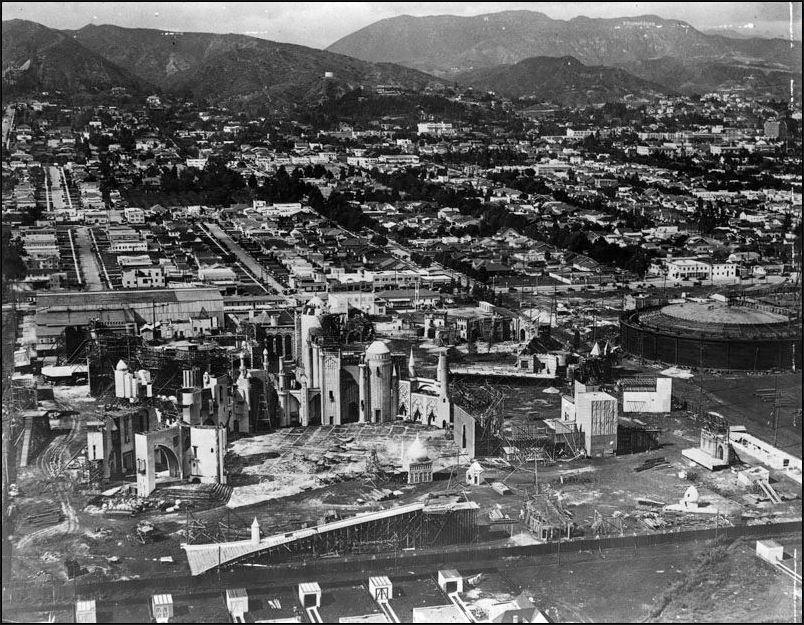
Every time I have a new movie release coming up, I start getting asked about my job, about what it means to be a production designer. Often times, people call me a “set designer” or an “art director” and I casually explain the difference. There have been a few times where I have had to explain to a new director that no, I do not “share responsibility” with my art director and have explained the difference between the two roles.
“Production designers” and “art directors” have completed different roles in the history of film design, depending on the era. At the turn of the century in France, Alice Guy Blaché employed Henri Menessier as her art director on some of the earliest narrative silent films ever made. He designed the set pieces, which were shot either in studio or outdoors, painted scenic backdrops, oversaw the construction and paint shops and helped create special effects.
In the US, D.W. Griffith plucked chief carpenter Frank Wortman out of the construction shop to give him a place of responsibility equal to that of his cameraman. These early sets belonged to studios and were often taken apart and reused to make new ones. Backdrops were stored and reused or repainted to be used in new stories. Art directors were employed by these studios and organized all the scenic components and shops. This shorthand made it easy to be able to produce many films over the course of a year.
In the beginnings of cinema, there could be several art directors on a film, depending on the size of the picture and the division of their roles. One could focus on backdrops while another focused on set pieces and still another did the sketches of the overall set. With the advent of more sophisticated special effects, art directors’ responsibilities could be divided between physical sets and the special effects used to unite the overall vision. Many art directors, such as Wortman, never saw their credits on film.
By the early 1920s, studios were competing to create bigger and more creative pictures. In 1924, Douglas Fairbanks managed to complete one of the most expensive films of that decade – “The Thief of Bagdad”. This epic was reputed to cost over $1,000,000 and featured the art direction of one of Hollywood’s most famous art directors, William Cameron Menzies. Menzies was a director himself since the early 1930s. In the late 30s, he had designed the lavish “Gone With The Wind”, produced by David O. Selznick.
It became increasingly obvious that the mechanics of art direction had become far more complicated, costlier and specialized than when film had first originated. Films and sets were being visualized, designed and constructed from scratch. Noting this, Selznick decided to grant Menzies the “production designer” credit on “Gone With The Wind”, the first of its kind.
Today, production designers are acknowledged as the department heads responsible for overseeing the overall visual look of a film, working closely with the cinematographer to bring a director’s vision to life. Depending on the type of film, responsibilities can include previz and vfx, as well as overseeing the art department, set decoration, props, construction, scenic paint as well as locations. Art directors are the right hand of the production designer and are specifically in charge of the field of construction, scenic paint and graphics. They work to ensure that everyone in the art department is working to the designers’ vision, manage budget and labor, and oversee builds.
Today, production designers are the acknowledged department heads to whom art directors, set decorators, propmasters and others report. However, the strong traces of the title Art Director in Hollywood, a product of the studio system, are hard to erase. For example, the professional guild is called "The Art Directors Guild", and the Academy Award goes to “Best achievement in art direction”. An even more acute sign for the misunderstanding in the industry is that the title Production Designer does not appear in many union contracts.
It is possible that the confusion regarding the Production Designer credit is one factor in the erosion of its importance and exposure. A few years ago, there was talk of the New York Times ceasing to list production design credits from its theatrical reviews. Letters to the editor were written, including by many members of IATSE Local 829 and beyond, to protest the decision. Wikipedia has never listed production designers in their credits on a movie (preferring to list only director, producers, writers, stars, music, cinematographers, editors and production company and distributors), although Wikipedia Italy does. In the past few years, Variety, one of our industry’s trade staples, has stopped listing many of the crew in their reviews, including the production designer credits. Now, most movies’ credits include only “director, screenplay, camera and editor”. I’m not sure how many people have noticed or why the change. Frank Wortman never got to see his credit on any film. It seems odd that a hundred years later, especially with today’s evolving technologies and the need to adapt to them rapidly, production designers would need to fight at all to hold on to the credits and respect they earned long ago.






